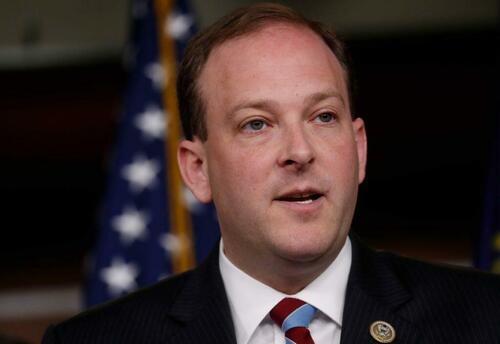Authored by Diana Furchtgott-Roth via RealClearEnergy,
Last week, EPA Administrator Lee Zeldin announced the proposed repeal of the Biden-era’s Clean Power Plan 2.0, which ruled that coal-fired and many new natural gas power plants must capture and store over 90% of their carbon emissions by the 2030s—or shut down by 2040. It’s a costly mandate, resting on shaky legal and technical foundations. Americans would be fortunate to have it repealed.
President Biden issued his Clean Power Plan 2.0 after the Supreme Court ruled in West Virginia v. Environmental Protection Agency that President Obama’s Clean Power Plan 1.0 exceeded the Environmental Protection Agency’s (EPA) statutory authority. The Court’s 2022 decision concluded that the EPA had overstepped by attempting to reshape the nation’s energy grid without clear congressional approval.
In a world where energy security and affordability are paramount, one might assume that when the Supreme Court strikes down a sweeping environmental regulation, the EPA would reconsider its approach. But in Washington, ideology often trumps reason, and undeterred, the Biden administration returned in 2024 with a sequel that EPA now proposes to end.
The Clean Power Plan 1.0 attempted to force states to overhaul their energy systems entirely, compelling them to adopt renewable energy and shutter fossil fuel plants, regardless of local needs or economic consequences.
Its successor, the Clean Power Plan 2.0, imposed an estimated $15 billion in regulatory costs over 20 years, and greater costs through increases in prices of electricity and slower economic growth. EPA argues “that GHG emissions from fossil fuel-fired power plants do not contribute significantly to dangerous air pollution.”
Just as Chief Justice John Roberts warned in 2022 that the EPA had claimed “an unheralded power representing a transformative expansion of its regulatory authority,” the EPA was trying to do through regulation with the Clean Power Plan 2.0 what Congress had repeatedly declined to do through legislation.
Fifteen years ago similar legislative proposals—the Waxman-Markey and Kerry-Lieberman bills—failed in the U.S. Congress even when Democrats held strong majorities. That should have signaled to regulators that such sweeping changes lacked democratic legitimacy.
Yet ideology brooks no dissent, and the Biden administration’s Clean Power Plan 2.0 pressed ahead, relying on technologies that are neither commercially viable nor widely demonstrated. Carbon capture and storage, the linchpin of the Biden plan, remains prohibitively expensive and technically uncertain. Hydrogen, another favored solution, is not cost-effective. The EPA’s cost-benefit analysis glossed over these realities, assuming generous tax subsidies and benefits from reduced CO2 emissions would bridge the gap.
The consequences of this regulatory ambition are stark. The North American Electric Reliability Corporation warned in 2024 that the Biden plan’s disincentives for baseload power would destabilize the electricity grid, increasing the risk of blackouts. Spain’s recent 12-hour blackout offers a cautionary tale: rapid transitions to solar without reliable baseload power can lead to lack of backup power, causing the grid to crash.
Moreover, the Biden plan was regressive. It would raise electricity prices, disproportionately affecting low-income households, farmers, and small businesses. It would also undermine a reliable electricity grid and economic growth. By constraining energy supply and inflating costs, it would drive economic activity and jobs offshore, where goods would be manufactured with coal-fired energy in China.
The dirty secret, which Mr. Zeldin forced into the open, is that the Biden plan would not have helped the climate. The greenhouse gases emitted by the power sector do not significantly affect human health, and moving energy intensive manufacturing overseas where it is made with coal-fired power using older technology would have raised emissions, not lowered them.
There is also a deeper constitutional issue at play. The EPA is misusing its authority under the Clean Air Act to pressure states into adopting policies that lie outside its jurisdiction. The plan’s emissions targets are so stringent that no state has voted them into law.
The Clean Power Plan 2.0 amounts to a form of federal commandeering. States are faced with a loss of a significant portion of their electricity generation capacity, and their manufacturing base, by restructuring their energy systems to align with the EPA’s vision. This is not cooperative federalism; it is coercion.
And it is unnecessary. America’s carbon emissions have declined by about a billion metric tons over the past 15 years without such mandates. This progress has been driven by technological innovation, not federal diktats. Cleaner air and efficient power generation are worthy goals, but they must be pursued within the bounds of the law and with respect for democratic processes.
The lesson from West Virginia v. EPA is clear: transformative policy changes require legislative backing. Agencies cannot conjure sweeping powers from ambiguous statutes. The rule of law demands clarity, accountability, and restraint.
As America grapples to ensure grid reliability, there is a cautionary tale here. The path to a reliable energy future lies not in top-down mandates, but in innovation, cooperation, and respect for the institutions that safeguard our freedoms. Administrator Zeldin should be congratulated.
Diana Furchtgott-Roth is director of the Center for Energy, Climate, and Environment at The Heritage Foundation.
Loading…


















